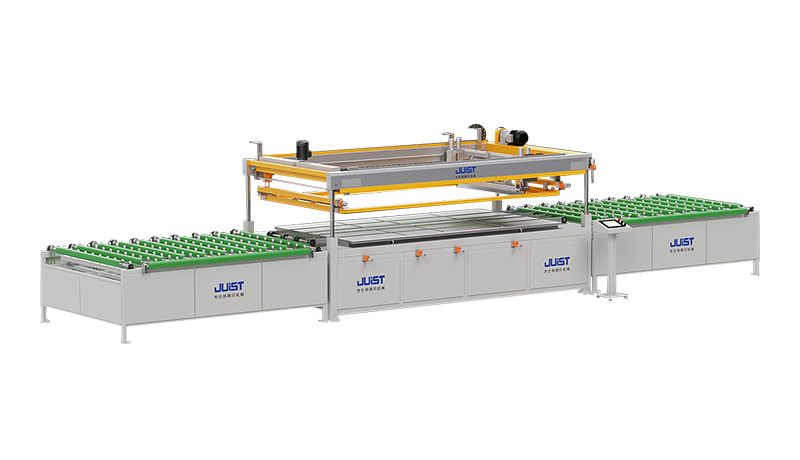+86-519-83387581
The gorgeous transformation of traditional glass: when transparent media turns into intelligent interfaces
At the forefront of materials science, a revolutionary manufacturing device is rewriting the essential properties of glass. The newly developed automatic photoelectric glass printer perfectly integrates optics, electronics and precision printing technology, enabling ordinary glass surfaces to gain unprecedented capabilities such as sensing the environment, regulating light, and collecting energy. This breakthrough not only represents a major upgrade in traditional glass deep processing technology, but also indicates that building curtain walls, car windows and even electronic equipment shells will evolve into intelligent interfaces with interactive functions, laying the manufacturing foundation for surface technology in the era of the Internet of Things.
The precise dance of light and electricity: how nano-level printing creates miracles
The quantum dot deposition system at the core of the device is like a precision brush in the microscopic world, which can "draw" functional patterns on a glass substrate with micron-level precision. Conductive ink forms a self-assembled nanostructure under the action of a high-voltage electric field, achieving a transmittance of up to 80% while maintaining excellent conductivity. The most amazing thing is the multi-material co-printing technology. Through precise inter-layer alignment control, circuit printing, optical layer adjustment and decorative pattern production can be completed simultaneously in a single process. This "three-in-one" manufacturing process increases production efficiency to more than five times that of traditional methods.
Window of the Future: Architectural Glass Gains 'Superpowers'
In the demonstration project, the smart curtain wall produced by this technology is showing impressive functional characteristics: in the morning, the invisible photovoltaic grid on the glass surface silently converts sunlight energy; the strong light at noon triggers the electrochromic layer to automatically adjust the transmittance; in the evening, the LED matrix integrated in the glass shows dynamic artistic patterns. This innovative design that integrates energy collection, environmental regulation and aesthetic expression is redefining the value connotation of the building's external envelope structure, transforming the static building skin into a "living" interface that can communicate with the environment.
Quality Declaration under Strict Test
Witnessed by a third-party testing agency, the first batch of mass-produced samples delivered a convincing report card: after 2,000 hours of accelerated UV aging test, the performance attenuation of the functional layer was controlled within 3%; in the extreme temperature cycle of -40 degrees to 85 degrees, the interlayer bonding force retention rate exceeded 98%; after 50,000 bending tests, the resistance change of the conductive circuit did not exceed 5% of the initial value. These data not only verify the maturity of the technology, but also open the door to its application in harsh environments such as aerospace.
Digital Twin Factory: A New Benchmark for Intelligent Manufacturing
Leading manufacturers have begun to deploy fully digital production lines based on this technology. Each printing unit is equipped with a real-time optical detection system, which automatically compensates for process deviations through machine learning algorithms. The digital twin platform simulates the entire process from material rheology to optoelectronic performance, shortening the new product development cycle by 70%. More noteworthy is its sustainable production performance. The closed-loop solvent recovery system reduces hazardous waste emissions by 90%, and the low-temperature curing process saves 65% of energy consumption. These innovations reduce the carbon footprint of optoelectronic glass by 4.2 kg per square meter.
Innovation never stops: the next generation of technology is on the way
The R&D team revealed that the printing process of perovskite photovoltaic materials has entered the pilot stage, and it is expected to make the photoelectric conversion efficiency exceed the 25% mark. What is even more exciting is the development of bio-inspired optical coatings, which draw on the structural color principle of butterfly wings to achieve color display effects without dyes. With the improvement of photon design automation tools, designers in the future will be able to freely design the optical properties of glass like creating digital art, opening a new era of surface technology.









